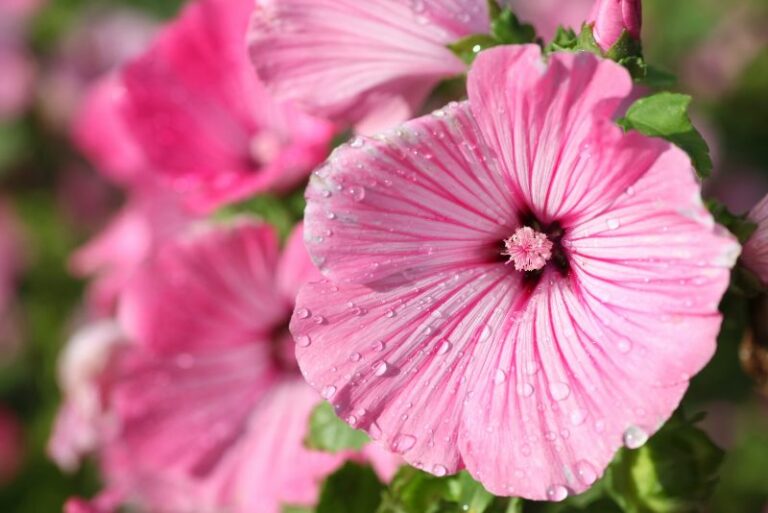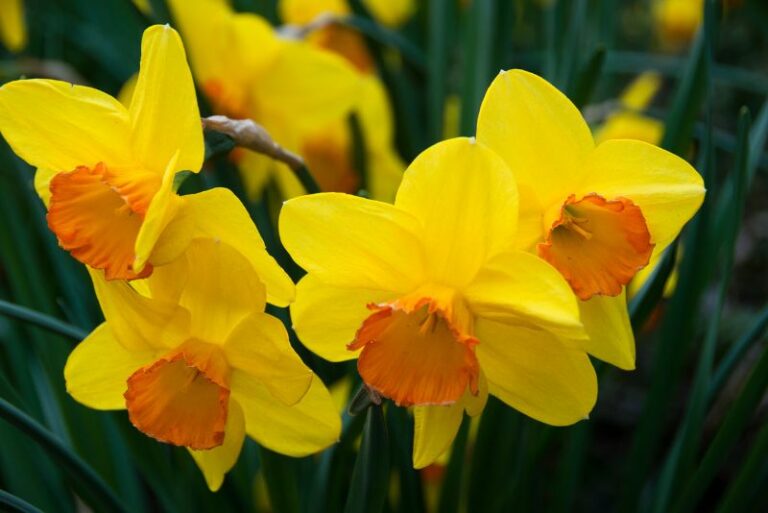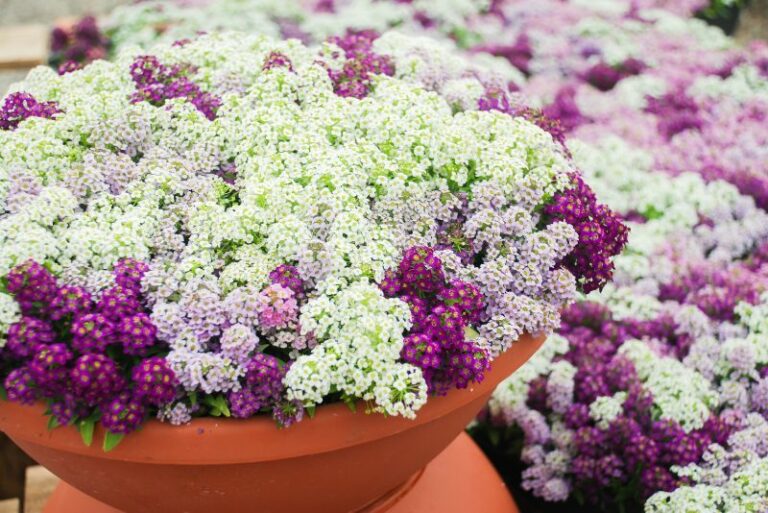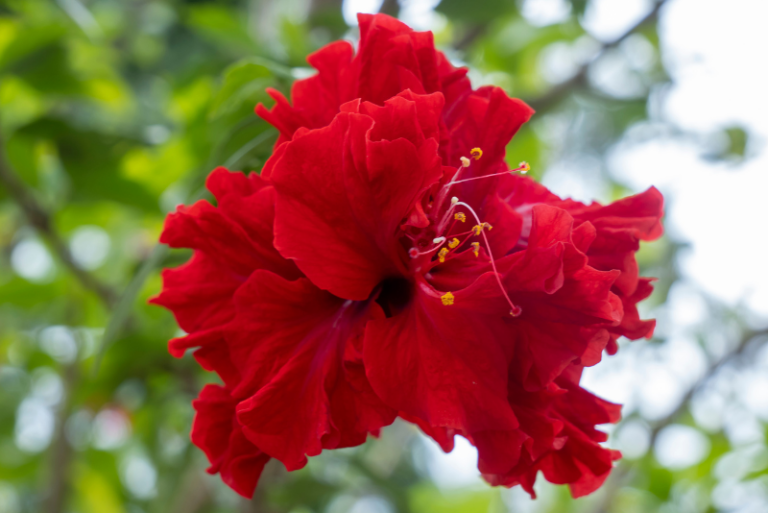How to Plant and Grow Daylilies: The Ultimate Carefree Perennial
Gardening with daylilies offers enthusiasts an alluring combination of vibrant, easy-to-manage perennials that can inject new life into any garden. Their robust nature and variety of colors, shapes, and sizes make daylilies an ideal choice for seasoned gardeners and newcomers alike. Here, we’ll explore the art of cultivating daylilies, from selecting the perfect cultivar to dealing with common challenges and providing care across the seasons.
Daylilies, or hemerocallis, present an irresistible proposition to any green space. Their name, which translates to “beautiful for a day” in Greek, peers into both their charm and their resilience. These hardy perennials signify endurance and grace. With over 60,000 registered cultivars, daylilies are renowned for their adaptability, capable of thriving in a range of climates and soils. Their blooms, often likened to orchids for their beauty, come in a rainbow of colors, offering a feast for the eyes and a balm for the soul.
Choosing Your Daylilies
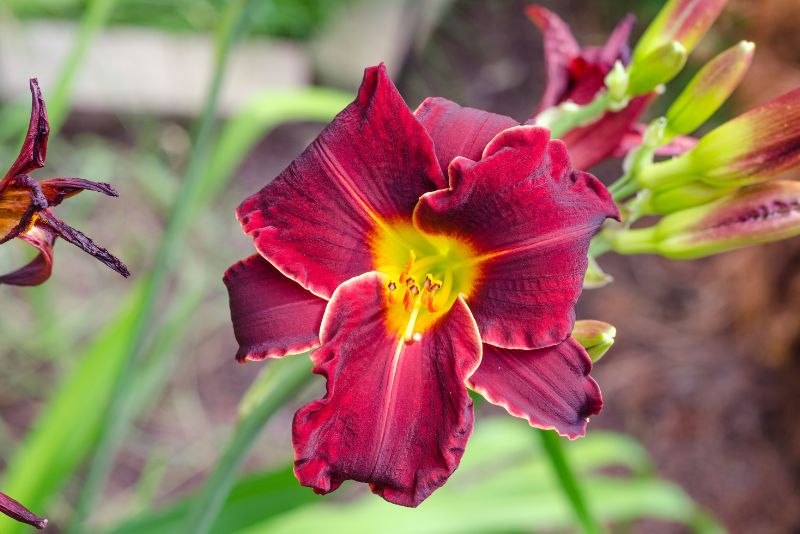
The first step in cultivating these carefree perennials is to select the right varieties that harmonize with your garden’s unique conditions. Selecting a daylily that aligns with the particularities of your climate and soil quality sets the stage for a thriving, low-maintenance garden. Expert guidance here is invaluable, especially for novices. The crux of this step is understanding that successful gardening with daylilies is as much about the plant’s intrinsic needs as it is about your garden’s environment.
Customizing Your Selection
When choosing daylilies, consider the nuances of your geographical zone, the amount of sunlight your garden receives, and your soil’s pH levels. For clay or sandy soil types, certain cultivars may be more beneficial than others. Pay attention to the characteristics listed on the tags when purchasing from a nursery or garden center, as they can provide vital information.
Expert’s Insights
“Daylilies are one of the most flexible and accommodating plants in horticulture,” remarks Jane Smith, a renowned horticulturist. “They can evoke a sense of luxury in your garden with their opulent blooms, despite their incredibly undemanding nature. Just be sure to match the environment of your space with the needs of your daylilies, and you’re set for success.”
Planting Your Daylilies
With the right varieties in hand, it’s time to roll up your sleeves and get these beauties into the ground. Proper planting techniques go a long way in laying a solid foundation for your daylily garden. From soil preparation to the intricacies of depth and spacing, every step has significance in fostering healthy growth.
Preparing the Soil
The adage “the best defense is a good offense” rings especially true with daylilies. Well-prepared soil ensures they receive the right nutrients and the correct drainage. Amend heavy or poor soils with organic matter, such as compost or peat, to improve texture and fertility. Loose and well-drained soil benefits these perennials greatly.
Optimal Growing Conditions
Daylilies are known for their adaptability to a wide range of light conditions. However, for the best flowering, aim for at least six hours of sunlight daily. Water is a crucial companion to light, and a regular but not excessive schedule of irrigation is recommended, particularly in the crucial establishment phase.
The Planting Process
Plant daylilies with care, ensuring the crown – where roots meet the foliage – sits just below the soil surface. A good rule of thumb is to space plants so they have ample room to grow, typically about 18 to 24 inches apart. This not only accounts for their immediate needs but also allows for future development and proper airflow to prevent diseases.
Expert Tip
Dr. John Doe, a botanist, advises, “Don’t rush the planting process. Take your time to ensure that the soil is well-prepared and the plants are set at the right depth. This initial care will establish the health and longevity of your daylilies.”
Caring for Your Daylilies
Once your daylilies are nestled in their new home, regular care will ensure they flourish year after year. Fertilizing, watering, and maintaining optimal growing conditions are key elements in fostering robust plants and an abundance of blossoms.
Fertilizing Schedule
A balanced fertilizer, applied in early spring and again after the first bloom cycle, can aid in robust vegetative growth and plentiful flowers. Be cautious not to over-fertilize, as this can result in reduced flowering. A simple 10-10-10 or 15-15-15 blend is usually suitable for most gardens.
Watering Best Practices
Inadequate moisture can stunt growth and reduce flowering, while too much can lead to rot. Ensure the soil is moist but not waterlogged, and consider mulching around plants to retain moisture and suppress weeds. During prolonged dry spells, a more concerted watering effort may be necessary to support healthy growth.
Deadheading and Dividing
Once daylily blooms finish their daily show, it’s best to remove the spent flowers. This process, known as deadheading, not only keeps the garden looking tidy but also encourages the plant to focus on new growth and flowering. Dividing clumps every few years rejuvenates the plants, prevents overcrowding, and allows you to propagate new ones for friends or to expand your garden.
Expert’s Perspective
Amanda Green, a master gardener, highlights the importance of attentive care. “Caring for daylilies isn’t rocket science, but it does require consistency. Remember to feed and water regularly, and don’t neglect the little tasks like deadheading. A garden is a partnership – give your daylilies the care they deserve, and they will give you beauty in return, seemingly without effort.”
Dealing with Common Issues
Although prized for their resilience, daylilies can occasionally face challenges such as pests, diseases, or environmental stressors. Staying vigilant and informed is the best way to address issues as they arise and maintain a healthy garden.
Pest Management
Common garden pests like aphids and thrips can be nuisances, but they rarely cause significant damage to daylilies. A gentle blast of water can often dislodge small pests, or you can use insecticidal soap for more stubborn infestations. Keep an eye out for slugs and snails, particularly during wet weather, and use appropriate deterrents.
Disease Control
Fungal diseases, including rust and crown rot, can trouble your garden. To combat these, ensure proper air circulation by maintaining the recommended plant spacing, avoid overhead watering when possible, and promptly remove any diseased foliage. Fungicides may be necessary in severe cases but should be used judiciously following label instructions.
Environmental Stress
Daylilies are generally unfazed by the weather, but extremes in temperature or uncharacteristic drought can impact their health. Light shading during exceptionally hot periods and regular watering during a dry spell can help ease the stress on your plants.
Proactive Measure
“Prevention is often better than a cure, especially in the garden,” remarks Jane Smith. “Maintain a healthy growing environment, and be observant. Catching issues early can make the difference between a minor inconvenience and a major problem.”
Seasonal Care for Daylilies
The adage “a stitch in time saves nine” is particularly apt for seasonal care in the garden. Knowing what to do and when, season by season, ensures the continuous health and blooming of your daylilies.
Spring
In the brisk days of Spring, your garden will come to life once more. This is the time to replenish with a slow-release fertilizer and set the stage for bright, cheery blooms. Inspect for any signs of disease or pest activity from the previous year and take action as needed.
Summer
Summer is peak season for daylilies, but it’s also a time of high stress. These resilient perennials can withstand a lot, but even they need a little help in extreme heat or dry spells. Monitor moisture levels and provide shade or supplementary water as required. Enjoy the bountiful display and consider staking taller varieties if necessary.
Fall
As the days grow shorter and the blooms begin to fade, your daylilies will prepare for their winter dormancy. Fall is the perfect time to clean up the garden, remove any dead or decaying foliage, and give a final fertilization to boost the plant’s health before the cold sets in.
Winter
The dormant season is one of rest for your daylilies. While they need little care during this time, a layer of mulch to protect roots and some light watering on warmer days to prevent desiccation can make a difference in their performance come spring.
Year-Round Watch
Amanda Green reminds gardeners to never truly clock out from their daylily care. “The diligent gardener is always one step ahead, observing, and planning. When it comes to daylilies, a little attention year-round can prevent surprises and ensure that come next growing season, your garden is ready to put on a show.”
Conclusion
The beauty of daylilies lies not just in their vibrant display but in the fact that they ask so little, yet offer so much in return. With the guidelines in this care manual, anyone can transform a corner of their world into a vision of color and life. The journey to growing these ultimate carefree perennials is simple: embrace them, nurture them, and enjoy the enchanting presence they bring to your garden.

